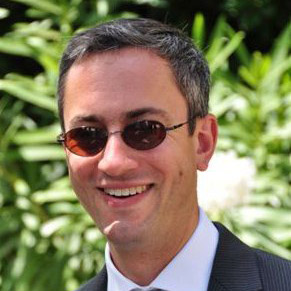
Robert B. Gramacy Professor of Statistics
Bayesian treed Gaussian process models
tgp
is an R
package for fully Bayesian nonstationary,
semiparametric nonlinear regression, design and optimization by
treed Gaussian processes and limiting linear models.

This software is licensed under the GNU Lesser Public License (LGPL), version 2 or later. See the change log and an archive of previous versions.
The current version provides:
- Bayesian linear models, CART, treed linear models, stationary separable and isotropic Gaussian processes, and (treed) Gaussian process single-index model
- categorical inputs, sensitivity analysis, multi-resolution models and importance tempering are supported
- methods for the (sequential) design of exeperiments via treed sequential maximum entropy design, active learning (ALM and ALC), and optimization by expected improvement
- 1-d and 2-d plotting, with higher dimension projection and slice capabilities, and tree drawing for posterior summaries
Obtaining the package
- Download
Rfrom cran.r-project.org by selecting the version for your operating system. - Install the tgp package, from within
R. This will download, install, and configure the tgp package for you.
R> install.packages("tgp") - Optionally, install the
akimaandmaptreepackages.
R> install.packages(c("akima", "maptree")) - Load the library as you would for any
Rlibrary.
R> library(tgp)

Documentation
- The tgp tutorial
is implemented as a package vignette, authored in Sweave. The pdf can be obtained from within
Rwith the following code.
R> vignette("tgp") - To obtain the source code contained in the vignette, use the Stangle command.
R> v <- vignette("tgp") - Each of the examples in the vignette are also available as a demo. For example, to get the demo corresponding the example for the exponential data, do:
R> demo("exp", package="tgp") - The demos were actually created using the Stangle command on the vignette sources. To see all available demos, type:
R> demo(package="tgp") - Version 2.x is accompanied by a new tutorial outlining the extentions of the methods to categorical inputs, sensitivity analysis, optimization, and importance tempering. Or replace "tgp" in the vignette instructions above with "tgp2".
- See the package documentation. A pdf
version of the reference manual, or help pages, is also available.
The help pages can be accessed from within
R. Try starting with:
R> help(package=tgp)
R> ? btgp # follow the examples - I gave a poster at the Valencia 8 meeting (June 2006) which is a (very) condensed version of the tutorial, above.
R> Stangle(paste(v$Dir, "/doc/", v$File, sep=""))
References
- Bayesian treed response surface models (2013) with Hugh Chipman, Ed George and Rob McCulloch; WIREs Data Mining and Knowledge Discovery, 3(4)
- Gaussian process single-index models as emulators for computer experiments (2012) with Heng Lian; Technometrics, 54(1), pp. 30-41; preprint on arXiv:1009.4241
-
Categorical inputs, sensitivity analysis, optimization and importance tempering with
tgpversion 2, anRpackage for treed Gaussian process models (2010) with Matt Taddy. Journal of Statistical Software, 33(6); snapshot of one of twoRvignettes in thetgppackage as of January 2010 -
tgp: AnRPackage for Bayesian Nonstationary, Semiparametric Nonlinear Regression and Design by Treed Gaussian Process Models. (2007) Journal of Statistical Software, volume 19(9). Snapshot of theRvignette for thetgppackage as of June 2007. - Bayesian treed Gaussian process models with an application to computer modeling (2008) with Herbert K.H. Lee. Journal of the American Statistical Association, 103(483), pp. 1119-1130; preprint on arXiv:0710.4536
- Gaussian processes and limiting linear models (2008) with Herbert K.H. Lee. Computational Statistics and Data Analysis, 53, pp. 123-136; preprint on arXiv:0804.4685
- Adaptive design and analysis of supercomputer experiments (2009) with Herbert K.H. Lee. Technometrics, 51(2), pp. 130-145; preprint on arXiv:0805.4359
- My Ph.D. thesis. More details than you need, all in one place.
- Parameter space exploration with Gaussian process trees (2004) with Herbert K. H. Lee and William G. Macready; International Conference on Machine Learning (ICML 2004) Banff, Canada.